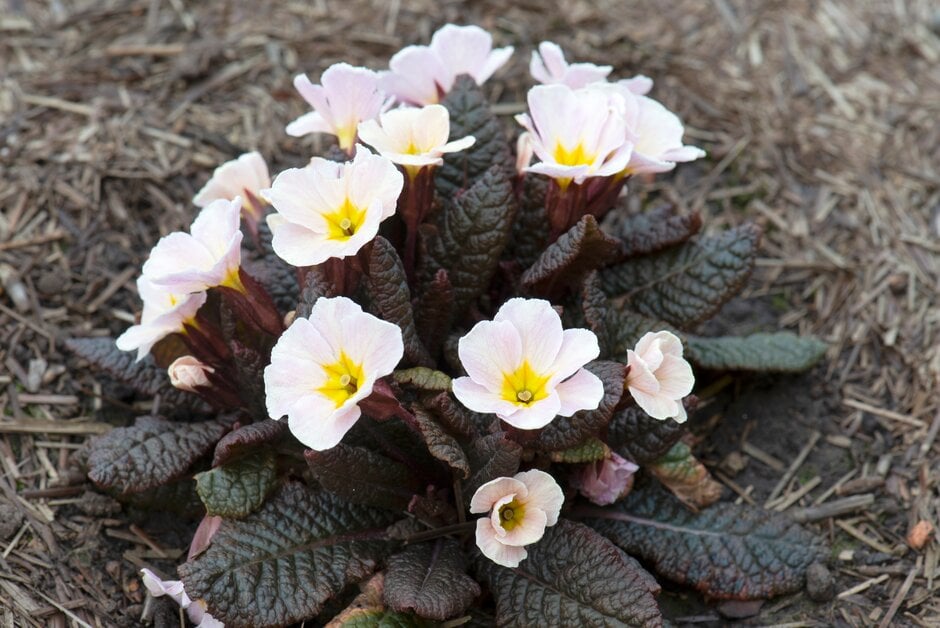Primula vulgaris Drumcliffe ('K74'PBR) (Pr/Prim)
primrose [Drumcliffe]
A compact, rosette-forming, semi-evergreen perennial with oblong, heavily veined, bronze-to purple-flushed, dark green leaves and, in spring, fragrant, white to pale pink flowers with yellow throats.

Buy this plant
Size
Ultimate height
0.1–0.5 metresTime to ultimate height
2–5 yearsUltimate spread
0.1–0.5 metresGrowing conditions
Moisture
Moist but well–drainedpH
Neutral, Acid, AlkalineColour & scent
| Stem | Flower | Foliage | Fruit | |
| Spring | White Pink Yellow | Green Bronze | ||
|---|---|---|---|---|
| Summer | Green Bronze | |||
| Autumn | Green Bronze | |||
| Winter |
Position
- Full sun
- Partial shade
Aspect
East–facing or West–facing
Exposure
Sheltered Hardiness
H6Botanical details
- Family
- Primulaceae
- Native to GB / Ireland
- No
- Foliage
- Semi evergreen
- Habit
- Clump forming
- Genus
Primula are herbaceous or semi-evergreen perennials, forming a basal rosette of simple leaves, with salver-shaped or bell-shaped flowers which may be solitary or carried in an umbel or in whorls on an erect stem
- Name status
Trade
- Horticultural Group
- Primrose group primulas are mainly grown as herbaceous perennials, and produce clusters of flowers on individual stems from the basal rosettes, although a few may also have umbel-like flowers. They are either spring-flowering, if grown without protection, or winter- to spring-flowering, if grown as biennial container plants in greenhouses or indoors.
How to grow
Cultivation
Favours a sheltered position in moist but free-draining soil in sun or partial shade. See primula cultivation for further advice
Propagation
Propagate by seed or division
Suggested planting locations and garden types
- Cottage and informal garden
- Wildlife gardens
- City and courtyard gardens
- Low Maintenance
- Flower borders and beds
- Underplanting of roses and shrubs
- Garden edging
Pruning
No pruning required, but any old or faded leaves can be removed if necessary
Pests
May be susceptible to some slug damage on new growth.
Diseases
May be susceptible to grey moulds in damp or overcrowded situations.
Get involved
The Royal Horticultural Society is the UK’s leading gardening charity. We aim to enrich everyone’s life through plants, and make the UK a greener and more beautiful place.